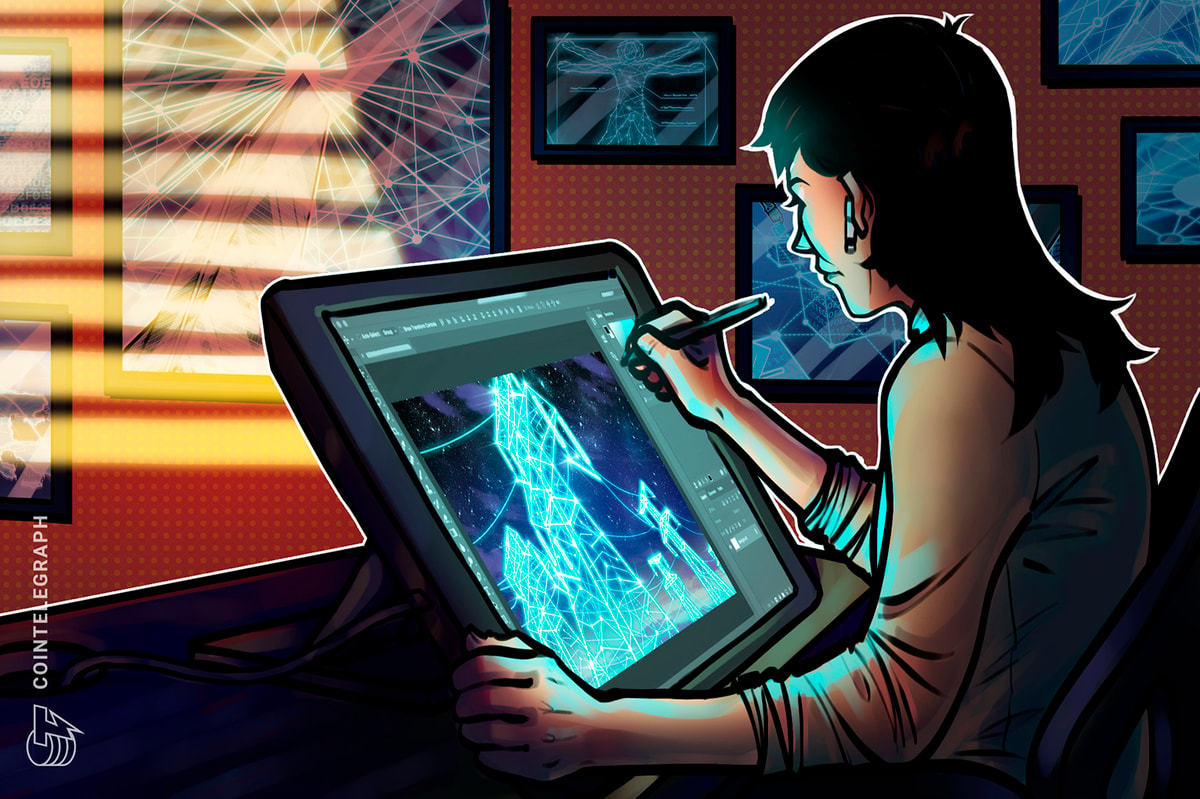The artificial intelligence art gold rush began around 2018 when Christie’s auctioned “Portrait of Edmond Belamy” for an astounding $432,500. Since th
The artificial intelligence art gold rush began around 2018 when Christie’s auctioned “Portrait of Edmond Belamy” for an astounding $432,500. Since then, it has been an up-only journey for AI-generated images.
“Théâtre D’opéra Spatial,” Jason Allen’s AI artwork, even won a prize at the Colorado State Fair art competition. This shows how AI-generated images have not only become more popular but also very sophisticated recently. But not everyone is happy about this development, and their concerns are valid.
The evolution of AI art has sparked feisty debates around originality, authorship and authenticity — themes fundamental to artistic expression. Generative AI, like any other technology, is intent-neutral. Whether the outcome is good or bad depends on how we use it.
So, it’s crucial to understand how and to what extent AI influences artistic communities and their creations.
The fears: Replacement, mimicry and homogenization
Some people fear that artificial intelligence will make artists obsolete — just like digital printing technology replaced analog typesetters, block makers, etc. This view, however, represents a limited, narrow perspective. Only the hopelessly conservative critic can peddle such short-sighted notions.
That’s not to say every traditional process involved in artistic creation will remain intact post-AI. Some of the menial and repetitive tasks will fade away. Yet, there’s little or no threat to creativity and ideation, the core humane aspects of art.
Related: Elizabeth Warren is pushing the Senate to ban your crypto wallet
Nevertheless, AI-generated images do present some ethical problems, such as copyright violations. They stem from the methods companies use to train text-to-art models and general adversarial networks. Consequently, some artists recently sued Midjourney, Stability AI and DeviantArt for using their artworks in AI training without permission or compensation.
Abandoning such practices is necessary to ensure the long-term adoption of and trust in AI art. They raise concerns about mimicry and homogenization, especially as text-to-image tools become more popular and accessible. And ultimately, this defeats the purpose of enhancing artistic creativity using AI.
Regardless of how artists and creators feel about AI-generated art, generative art tools have cemented their spot in the art ecosystem. Artist communities can now either adapt or complain. Many artists have smartly resorted to the former.

Recognize AI art as a distinct form
Boris Eldagsen, a German artist and photographer, refused to accept the prize he won at the 2023 Sony World Photography Awards. He “applied as a cheeky monkey” and submitted an AI-generated image for the creative open category.
Eldagsen wanted to make a point about whether we should consider AI-based imagery photography. He thinks AI-generated images and photographs are different entities, and can’t compete in the same category. The same argument can apply to AI art in general.
Like painting, sculpting, sketching, etc., AI art is a category in itself. We must approach it that way. It’s not a question of regulating how artists use AI or if they can participate in competitions, nor is it about purely philosophical considerations seeking the essence of art. Instead, it’s necessary to recognize AI art as a distinct form, setting the parameters for judgment accordingly.
Having said that, adding identifying marks to distinguish AI-generated images from photography or other kinds of digital imagery may prove helpful — particularly in the early days, to curb misunderstandings and the potential spread of misinformation.
The segregation works both ways, though, and can stop people from confusing digital illustrations as AI-generated artwork. This helps avoid situations where creators get banned from channels with “no AI art” policies, like how digitalAI artist Ben Moran was banned from Reddit’s r/Art subreddit.

Toward human-machine collaboration in art
The World Photography Organization said they awarded Eldagsen at the 2023 Sony World Photography Awards because the AI-generated work relied heavily upon the artist’s “wealth of photographic knowledge.” Moreover, the competition’s creative open category “welcomes various experimental approaches to image making from cyanotypes and rayographs to cutting-edge digital practices.”
This points to the fact that AI can enhance, not necessarily hamper, artistic creation. So, here’s the most critical aspect of AI’s influence on art and artistic communities: It widens their horizon significantly, unlocking new possibilities and ways to express ideas.
Related: The world could be facing a dark future thanks to CBDCs
Accessible generative AI tools — such as Midjourney, Dall-E and my own BlueWillow — also foster artistic inclusion. They allow anyone with a creative mind to make high-quality…
cointelegraph.com
